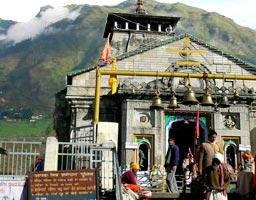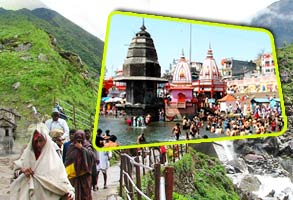Kedarnath is one of the most important holy towns of Uttarakhand which draws many pilgrims each year. Located at an altitude of 3,584 metres above sea level, Kedarnath is home to one of the 12 major jyotirlings of Kedar or Lord Shiva in the country today. It is a beautiful place which has some exquisite views and it is also the origin of River Mandakini.
Kedarnath is one of the Char Dhams which every Hindu must take a dive in, in order to attain salvation. It falls on the Rudraprayag district of Uttarakhand. The temple of Kedarnath dates back to the time of Mahabharata. According to legends, Pandavas, after killing their brothers in the battle of Kurukshetra, wanted to seek the blessings of Lord Shiva to pacify their sins. But, Shiva kept eluding them and kept fleeing from once place to other. It was during this time that he took the form of a bull and stayed in Kedarnath. Pandavas, however, followed him there and then he made a dive towards the hump.
In the process of fleeing from there, he left his hump back. This idol is now worshipped by the pilgrims who visit the place each year. The various other parts of Lord Shiva are worshipped at other places; like arms at Tungnath, mouth at Rudranath, navel at Madhmaheshwar and hair at Kalpeshwar. Kedarnath, together with all these shrines is called Panch Kedar.
The Kedarnath temple was built by Adi Shankaracharya in the 8th century, just adjacent to the place where the Pandavas had built a temple as well. It is a huge structure which stands at the middle of a plateau which is covered in snow. It is believed that this temple is more than 1000 years old. The architecture found in the temple is exquisite while the walls are dotted with various scenes from the mythological stories and various images of deities.



